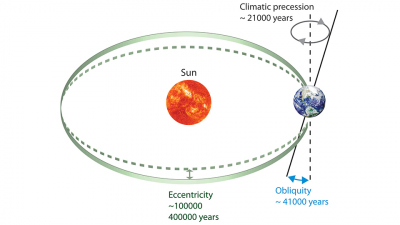- Home
- Discover
- Archive News
- News 2022
- climate reconstruction method
Has the temperature puzzle of this warm period been solved?

Dr. Samantha Bova and colleagues from the State University of New Jersey (USA) had presented a new method to correct data from marine sediments in the journal Nature in January 2021. In this work, they suggest that the climate has warmed continuously in both geological data and models, and that the previous discrepancy between climate models and geological data has been resolved.
Prof. Thomas Laepple of MARUM - Center for Marine Environmental Sciences at the University of Bremen and the Alfred Wegener Institute Helmholtz Centre for Polar and Marine Research, as well as colleagues from the United States, now question the conclusions of this work in a commentary in Nature. They show that the new method oversimplifies the complexity of the climate system and that the method favors consistency between climate models and geological data. They show that not only data from sedimentary records can be shifted towards a specific season, but that the climate also responds differently to solar radiation at different times of the year. Therefore, the question is again open, why climate models and climate reconstruction differ in this time period.
"Our results are also interesting because they may lead us out of a scientific dead end," Thomas Laepple explains the significance of the new finding. The question of how seasonal variations in solar radiation and temperature are coupled is key to understanding climate change on long time scales. "Since refined measurement methods, such as those being developed at MARUM, will be able to resolve the seasonal variation in the future, even without correction methods, we may soon have the opportunity to finally solve this problem."
T. Laepple, J. Shakun, F. He, S. Marcott: Concerns of assuming linearity in the reconstruction of thermal maxima. Nature (2022). DOI: https://doi.org/10.1038/s41586-022-04831-w


